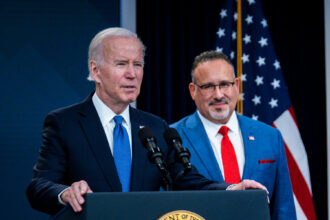Lifestyle diseases associated with poor dietary choices that the Healthy Kids program discourages continue to skyrocket. Portion control and balanced meals are necessary to ensure healthy living. The Healthy Kids program is an initiative that safeguards children’s wellbeing in several ways, including educating them about nutrition.
Teaching Children Proper Nutrition for Lasting Wellbeing
The Healthy Kids Program illustrates the power of committing to an initiative to actively involve children in changing society. The role of shaping eating habits in children sets them up for healthy dietary habits for the rest of their lives.
In the spirit of the Healthy Kids Program, the following are ideas on how to train children in adopting healthy eating:
- Encourage Children’s Participation
Often, parents and childcare workers handle diets and portioning for the children. Getting children actively involved in the tasks helps them own the program’s objectives. They feel confident and responsible for their choice.
Sessions should teach children about the ideal portioning of different types of food. They learn how to use weighing scales or other measurements to track the amounts of food they consume. Children can be taught to improvise, such as using their hands to measure out portions, should they lack other measurements.
The principle of portioning discourages the urge to insist on clean plates. Kids benefit from stopping eating when they feel full and eating when hungry. They should also learn how to measure portions of the food groups comprising a balanced diet.
- Appropriate Role Models
That children learn lasting life lessons by observing and copying significant others is no cliché. Those teaching and helping implement the Healthy Kids Program should be pictures of good health. Their daily lives should show the value of healthy food choices and portion and wellbeing practices, such as exercising as they walk the talk.
Such role-modelling happens during meal times in homes, schools, or restaurants. Where there are options on the menu, kids learn how to make their choices during a meal. In fast-food joints, they learn to choose healthy options such as fruits, vegetables, and low-sugar drinks.
- Education for Empowerment
It is wise to note that many temptations to unhealthy food and poor feeding habits exist. Some of them lead to health problems such as lifestyle diseases and dental problems. Obesity is a concern in Australian children and is essentially a result of poor nutritional habits and inconsistent portion control.
It is crucial to educate children on such implications. Children should learn about the composition of a balanced diet. Similarly, trainers should develop a motivation program to encourage people to stick to a diet plan.
Trainers should not use food as a punishment, bribe, or reward. They should continue showing kids their dietary choices’ immediate and long-term benefits. Such education sessions will empower children to choose active leisure activities, such as playing ball, and take on more incidental physical activities, such as taking the stairs and going for walks.
That means that a Healthy Kids Program should address issues such as a sedentary lifestyle as a factor that compounds the effects of poor portioning and poorly balanced diets. Families should turn off the TV during meal times. Such structured meal times reduce excessive snacking and expose children to different varieties of food to address children liking or disliking certain foods.
Conclusion
Teaching children healthy food choices and portion control empowers them to make informed decisions about their wellbeing. There are many tempting options for poor nutrition and lifestyle choices. The lasting change will come from instilling a commitment to healthful living in children and making it a way of life in society.














